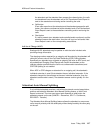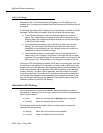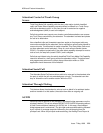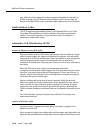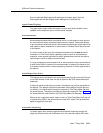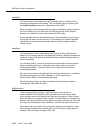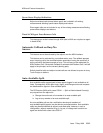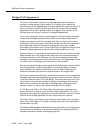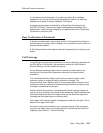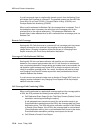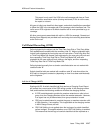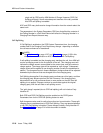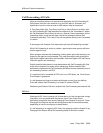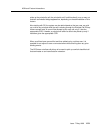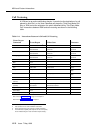
ASAI and Feature Interactions
Issue 7 May 1998
12-15
If a call alerts to a principal station A, as well as to station B as a bridged
appearance of A, then a call cannot be redirected from station A to a primary
appearance on station B using the Redirect Call Feature.
A bridged call appearance is selected for a Single-Step Conference by the
DEFINITY ECS only if there are no regular call appearances available at the
added station. Other than that, bridging is not supported with either Single-Step
Conference or Phantom Calls.
Busy Verification of Terminals
A domain-controlled station may be busy-verified. A Connected Event Report is
provided when the verifying user is bridged in on a connection in which there is a
domain-controlled station.
A Third Party Selective Hold request is denied if requested for the verifying user’s
station.
Call Coverage
If a call that goes to coverage is monitored on an active-notification association for
an ACD split or a VDN domain, the association receives the Call Offered to
Domain, Alerting, and Connected Event reports.
For an alternate answering position that is a domain-controlled station, the
Alerting and Connected Event Reports are returned to its domain-control
association.
The Call Redirected Event Report is sent to the principal’s domain-control
association when an analog principal’s call goes to coverage. The
Disconnect/Drop Event Report is sent for the coverage station’s domain-control
associations when the call which had been alerting at both the principal and the
coverage is answered at the principal.
Switch-classified calls placed to local destinations whose coverage criteria are
met do not go to coverage, they remain at the called party. Switch-classified calls
delivered to originators whose coverage criteria are met follow the originator’s
coverage path (provided they are not priority calls).
Direct-agent calls follow the agent’s coverage path rather than the split’s. This is
different from regular ACD calls.
An adjunct-routed call is allowed to go to coverage as usual. If the coverage is
busy, the user hears a busy tone and the adjunct is notified with the Route End
capability (cause CS0/16 — Normal Clearing).



